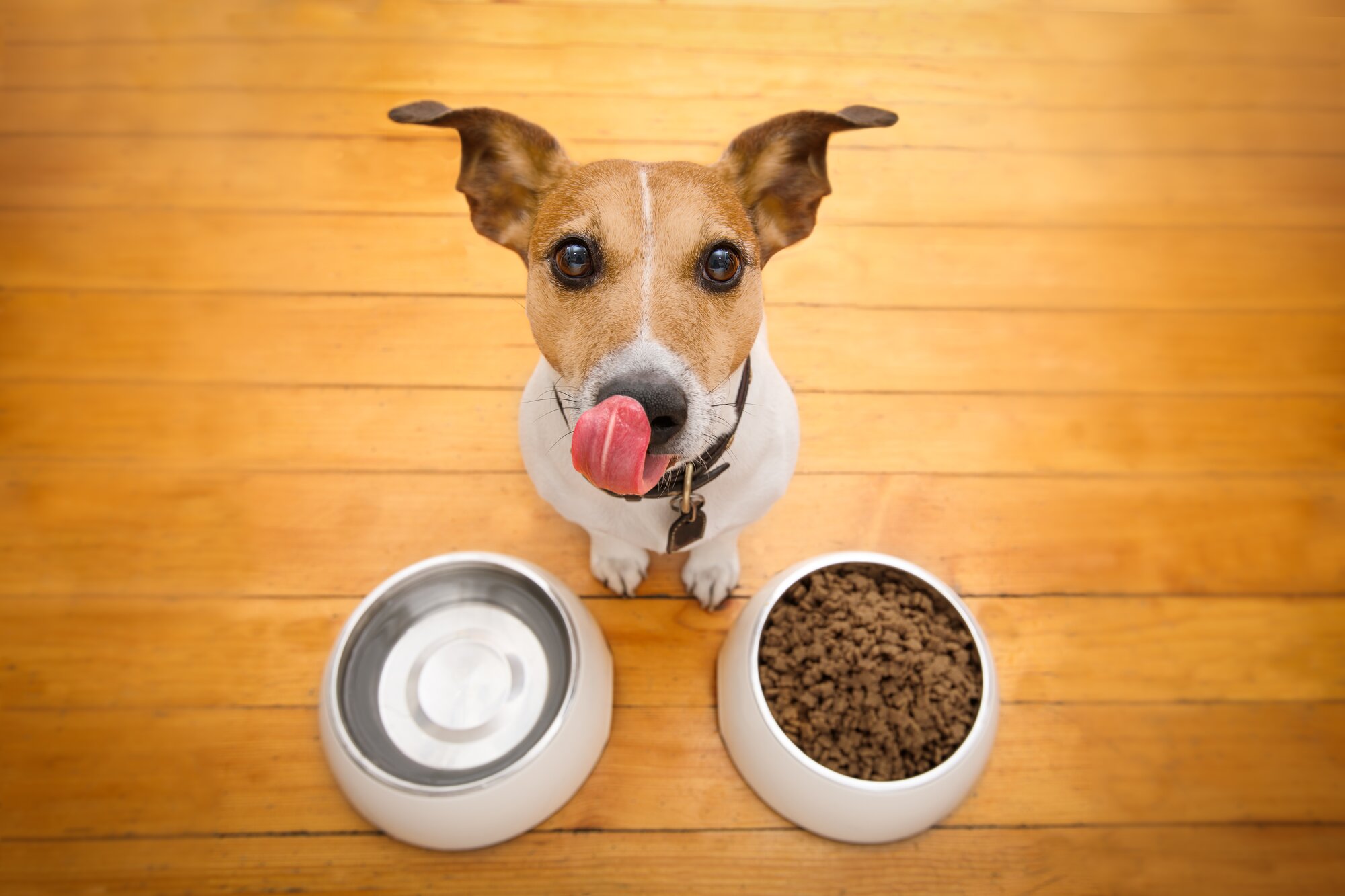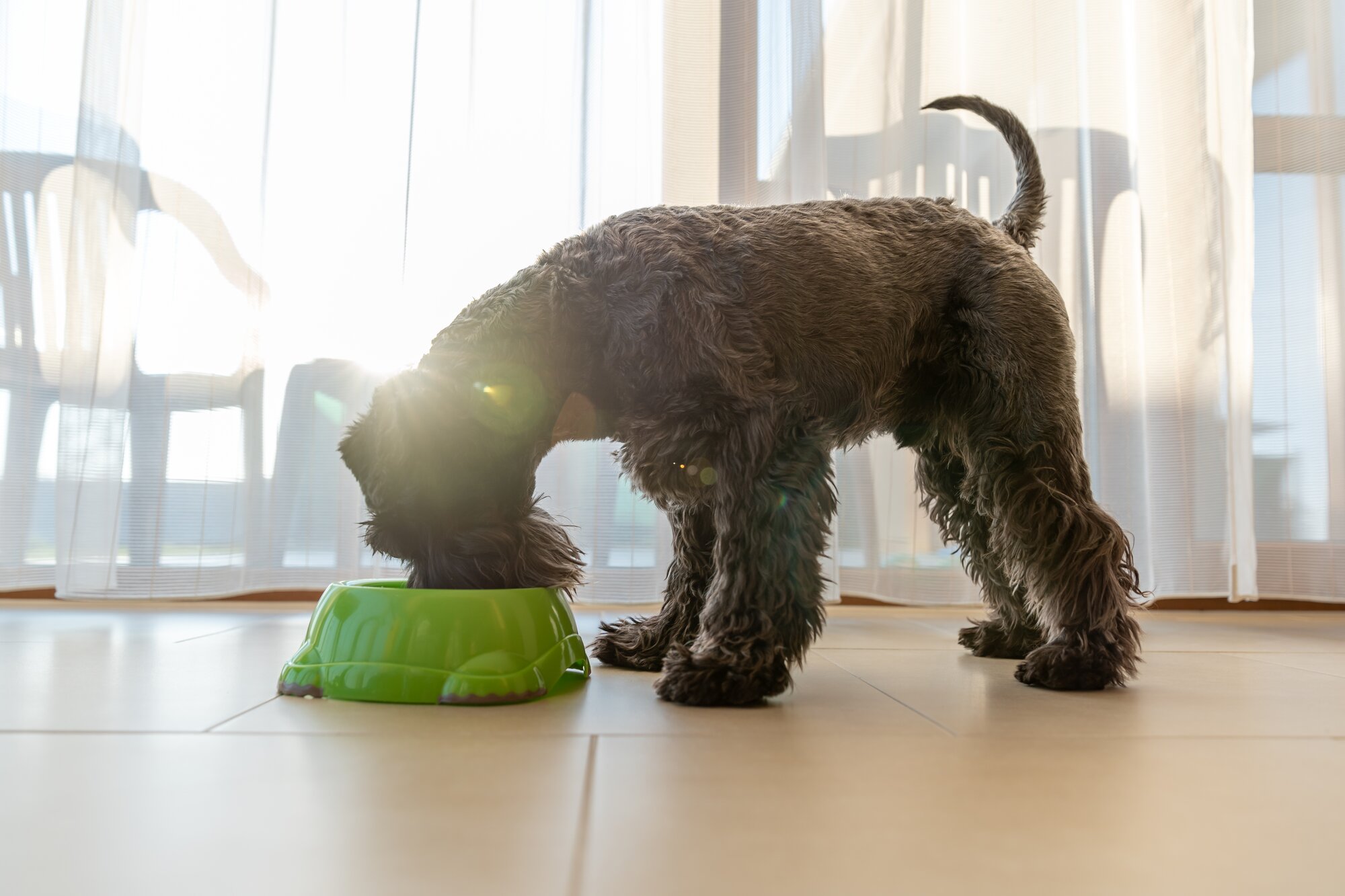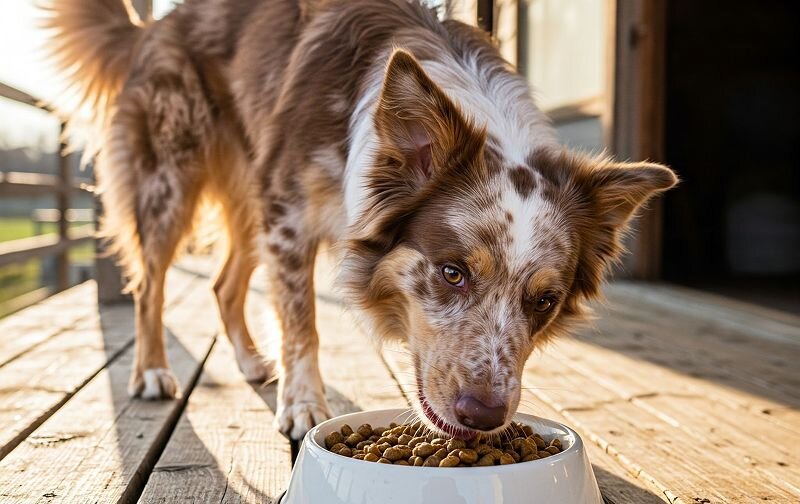To equip your dog with a healthy, balanced diet, the ideal method is to provide both wet and dry food - and consider a rotation that alternates between different meat proteins and flavours. This mixed-style feeding program has a number of benefits:
- Cost-effectiveness - feeding both wet and dry, compared to just wet food, will save you money in the long run due to the affordability of dry food 'per meal'
- Increased moisture intake - wet food helps keep your dog hydrated due to its high moisture content
- Variety for enhanced palatability - this is particularly helpful for fussy eaters who don't like to eat the same thing every day
- Promotes dental health - dry food has a crunchy texture which helps remove tartar, and is therefore much better for your dog's teeth than wet food alone
- Customisable nutrition tailored to individual needs - this is useful if your dog has multiple health conditions you'd like to address (for instance, dental disease and arthritis)
Examples of mixed feeding approaches
Combining both wet and dry food can offer a balanced diet while providing variety and addressing different nutritional needs, but it might not always be clear how to mix feed without misbalancing the nutrients. Some examples of how to mix feed include:
- Mix wet and dry food together in one bowl, given for all meals. You may wish to look at the recommended daily feeding amount for one particular wet food and one particular dry food and then halve each.
- Feed wet food in the morning, and dry food in the evening (or vice versa). Again, you may wish to halve the recommended daily feeding amount of each diet to make up one complete meal.
- Give dry food for all meals, and give wet food as a 'special treat' every few days. You may wish to have a couple of different dry food bags on hand - perhaps utilising different meat proteins or pet food brands - and alternate between them, to provide your dog with some variety of flavours.
Practical Considerations
When feeding a mix of both wet and dry food, there are a number of considerations to take into account.
Budget considerations and cost-effectiveness
Striking the right balance between wet and dry food based on the dog's individual needs and the owner's budget is crucial. Dry dog food is generally more affordable and has the advantage of longer shelf life, making it a budget-friendly option. Some owners choose to incorporate wet food as a supplement or a treat, using it sparingly to enhance palatability without significantly increasing costs.
Proper storage and handling of wet food
Storing and handling wet dog food with care is crucial to maintain its quality and ensure the health and safety of your pet. Unlike dry food, wet dog food is more susceptible to bacterial growth and spoilage due to its higher moisture content. Proper storage involves refrigeration of opened cans or pouches, as the cold environment inhibits the growth of harmful bacteria. It's essential to seal containers tightly and use them within the recommended timeframe to prevent contamination and maintain freshness. Additionally, practicing good hygiene while handling wet dog food, such as washing hands and utensils thoroughly, reduces the risk of cross-contamination.
Monitor food consumption to prevent spoiling
Monitoring your dog's food intake is essential to reduce spoilage and ensure the freshness and safety of the food in their bowl. Many dogs, especially those with specific dietary needs or health issues, may not consume their entire meal in one sitting. Leaving uneaten food in the bowl for extended periods can lead to bacterial growth and spoilage, posing a risk to the dog's health.




